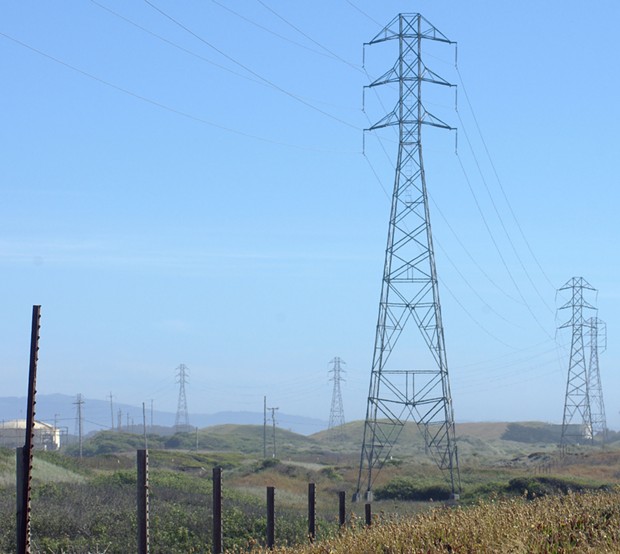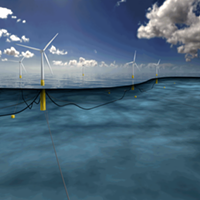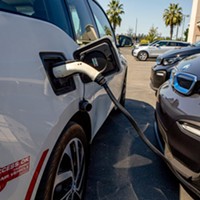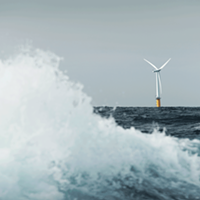[
{
"name": "Top Stories Video Pair",
"insertPoint": "7",
"component": "17087298",
"parentWrapperClass": "fdn-ads-inline-content-block",
"requiredCountToDisplay": "1"
}
]
Perhaps the biggest breakdown in the recent power shutoff was communication. As I write this, the California Public Utilities Commission has convened an emergency meeting with Pacific Gas & Electric Co. about the blackout. High among the commissioners' concerns are PG&E's communication failures to local governments, state agencies and customers during this event.
As important as that statewide conversation is, we also need to build a shared language here in Humboldt around resiliency — a core set of ideas and terms accessible to everyone in our community. Some of these will be technical concepts, while others encompass community values and needs. A common literacy in how our systems currently work, what our community needs and values are and how we expect climate change to alter our ecosystem is critical for the inclusive strategy we need to build together, if we want to live in a resilient community.
At the Schatz Energy Research Center, we offer workshops for all ages that introduce some technical vocabulary as well as environmental and social justice concepts that are key to energy literacy. We've had a number of people reach out to us this month, hoping to better understand what happened with the power shutoff — and what to expect next. Over the coming year, I know many agencies will be working on explanatory material. In the meantime, here's a brief overview of energy terms to facilitate discussion.
There are four basic elements to electrical energy: generation, transmission, storage and load.
Generation is the transformation of energy into power. Energy sources can be clean, renewable or neither. For example, a coal plant isn't renewable or clean: Coal supply is limited and its combustion releases small particulates, carbon dioxide, and other pollutants. Airborne particulates create health and ecological issues, while atmospheric carbon dioxide intensifies the planet's greenhouse effect and accelerates climate change. If we don't want to be sick or live in radically altered ecosystems, we need to use clean energy sources; if we don't want those sources to run out, they need to be renewable. (Of course, clean and renewable energy sources also have environmental impacts that must be addressed, both through improved technologies and appropriate siting.)
Transmission and distribution together are the system of energy transfer. Transmission typically refers to the larger lines between a power plant and a substation, while distribution connects a substation to end users. In Humboldt, two transmission lines from the east bring power into the county — and our distribution section of the grid is currently unable to run without being energized by at least one of these lines, even though we do have local generation. Hence, problems farther along the transmission system will cause our communities to lose electrification, as we did earlier this month.
In order to make the electrical grid more modular and allow segments to operate when others are down, each independent section would need (a) local generation, (b) the ability to independently "form" a grid and (c) system controls for safely separating from and reconnecting to primary transmission. There would also need to be live management of that module to prevent brownouts and power spikes. And, local storage would be critical if the energy generation is not available 24/7 — like for solar, when the sun goes down.
Storage is perhaps most easily understood in the form of a battery. Batteries can interact with an electrical grid to support more renewable power. By storing daytime solar energy for nighttime use, renewable energy becomes available even when it's not being generated. Battery storage also allows grid operators more flexibility to meet fluctuating energy demand, which stabilizes the grid as a whole.
Load is the electrical term for energy use, or any appliance that uses energy. My computer, lights and refrigerator are all loads. I have a gas oven, but its controls are electric, so I can use only the range when power is out. I think most people are comfortable listing the power loads in their home or office — at least those that plug into a wall socket. But during this month's shutoff, other needs became more apparent: Municipalities and fish hatcheries need electricity to pump water, gas stations to pump fuel and some people need electricity to pump oxygen. Hospitals need to keep medicines cold, patient blankets warm and scanners operating, while cell towers need power to transmit emergency messages. We live in a highly electrified society and there is a very real cost to human health when the power goes down.
For the last five years, the Schatz Center has been collaborating with a number of local agencies and tribal governments to create a network of energy resilience here on the North Coast. Two of these projects have been developed in partnership with the Blue Lake Rancheria and have been funded, in part, through the California Energy Commission as pilots for microgrid development. A microgrid does all of the things I listed above: generates its own energy, can form its own grid and it has system controls that allow for safe disconnection, independent operation and reconnection. The Rancheria's campus microgrid performed beautifully during the shutoff, providing services and a safe haven for many community members.
We're nearly ready to deploy the Rancheria's second microgrid, which will provide solar power to the gas station and convenience store. Our goal here is to provide a "plug and play" solar microgrid design that could be used in the 12,000 gas stations across California, fundamentally increasing their local resiliency. Simultaneously, we've begun site work on a microgrid for the Redwood Coast Airport and U.S. Coast Guard Air Station. We've also recently collaborated on a microgrid design for Humboldt's developing electrified public transit system.
Microgrids are only one piece of the electricity puzzle but they encourage us to think in new ways about how we want our future grid to operate. Between earthquakes, mudslides, wildfires and sea level rise, building and supporting resilience will always be a part of our lives here on the North Coast. This is a challenge but also an opportunity, as we create new models to share with communities across California and around the globe.
Maia Cheli is the outreach coordinator for the Schatz Energy Research Center at Humboldt State University. Maia prefers she/her pronouns and lives in Arcata.
Speaking of...
Comments
Showing 1-1 of 1
Latest in Views
Readers also liked…
-
Hope
- Sep 7, 2023
-
California Says No to Privatizing Medicare
- Sep 21, 2023



































